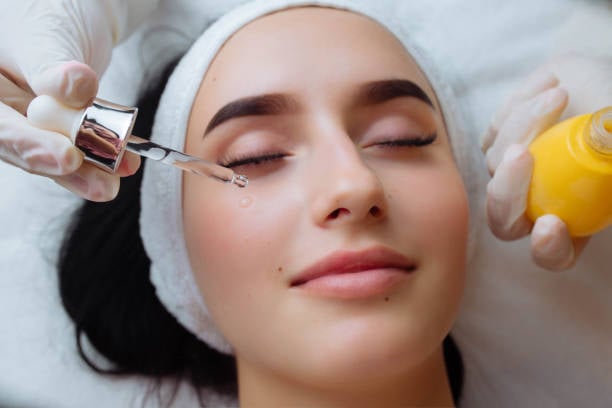When it comes to achieving smooth, radiant skin, chemical peels have become a highly sought-after skincare treatment. This procedure offers a powerful way to improve skin texture and tone by exfoliating damaged skin and encouraging cell renewal. In Riyadh, the popularity of chemical peels continues to grow as more people discover their transformative benefits for a youthful and healthy complexion.
chemical peels in Riyadh provide a controlled exfoliation process that removes the outermost layer of dead and dull skin cells. This chemical peels in Riyadh treatment stimulates the skin’s natural cell turnover, revealing smoother, brighter, and more even-toned skin underneath. Whether your skin suffers from acne scars, fine lines, hyperpigmentation, or rough texture, chemical peels can address a range of concerns effectively while promoting collagen production for firmer skin.
What Are Chemical Peels?
A chemical peel is a non-invasive skin resurfacing technique that applies a specially formulated chemical solution to the skin. This solution causes the outer layers of the skin to exfoliate and eventually peel off. The depth of exfoliation can vary — from superficial to medium and deep peels depending on the ingredients and concentration used. Each level targets different skin concerns:
- Superficial peels use mild acids like glycolic or lactic acid, which gently exfoliate the outer layer to brighten skin and improve minor imperfections.
- Medium peels penetrate deeper layers, treating moderate wrinkles, discoloration, and acne scars.
- Deep peels reach the lower layers of skin to address deeper wrinkles and more severe damage, requiring longer recovery.
Choosing the right type depends on your skin type, concerns, and desired results. Professional supervision ensures a safe and personalized peel experience.
How Chemical Peels Improve Skin Texture
Skin texture refers to the surface quality of your skin — whether it feels smooth, rough, bumpy, or uneven. Chemical peels enhance skin texture by removing the damaged outer layer that is often rough, flaky, or scarred. This exfoliation clears clogged pores and stimulates the production of new skin cells, which results in:
- A smoother skin surface free from rough patches and bumps
- Reduction of acne scars and fine lines that contribute to uneven texture
- Restoration of a soft, supple skin feel that looks and feels rejuvenated
Unlike mechanical exfoliation like microdermabrasion, chemical peels provide a more uniform and deeper exfoliation that effectively refines the skin texture without spreading bacteria or irritating sensitive areas.
How Chemical Peels Even Out Skin Tone
Uneven skin tone or discoloration is often caused by sun damage, hyperpigmentation, melasma, or age spots. Chemical peels help even out skin tone by:
- Breaking down excess melanin pigment in dark spots and hyperpigmented areas
- Removing dead skin cells that dull overall skin brightness
- Promoting regeneration of healthy, evenly pigmented cells for a radiant complexion
Regular chemical peel treatments can significantly diminish patchy pigmentation and create a smoother, more unified skin tone that reflects light beautifully.
Additional Benefits of Chemical Peels in Riyadh
Besides texture and tone improvement, chemical peels offer several notable advantages:
- Reduction of fine lines and wrinkles: The peel stimulates collagen growth which plumps skin and softens wrinkles.
- Acne treatment: They unclog pores and reduce breakouts by exfoliating bacteria-laden dead skin.
- Skin rejuvenation: Peels refresh tired, dull skin and enhance radiance.
- Boost in confidence: Clearer, healthier skin elevates self-esteem and appearance satisfaction.
The treatment process itself usually takes under an hour, with minimal downtime especially for superficial peels, making it convenient for busy lifestyles.
What to Expect After a Chemical Peel
Immediately following a peel, you may notice some redness and peeling as your skin sheds the damaged layer. This is a normal part of the healing and renewal process. Proper aftercare includes moisturizing, sun protection, and avoiding harsh skincare products until the skin fully recovers. Results typically become visible within days to weeks as new, smooth skin emerges. Multiple sessions may be recommended for optimal, long-lasting results.
Who Should Consider Chemical Peels?
Chemical peels suit many skin types and concerns but are especially beneficial for individuals who want to address:
- Acne scars and active acne
- Uneven texture and rough skin
- Hyperpigmentation and sun damage
- Fine lines and early signs of aging
- Dull or lackluster complexions
It is important to consult with a licensed dermatologist or skincare expert in Riyadh to ensure chemical peels are appropriate for your skin and to customize the treatment for your unique skin condition.
Frequently Asked Questions
How often should I get a chemical peel to see results?
Most skin types benefit from a series of 3 to 6 peels spaced a few weeks apart to achieve the best transformation in texture and tone.
Are chemical peels painful or uncomfortable?
Most patients experience mild tingling or warmth during the peel, but pain is typically minimal and manageable with superficial peels.
Can chemical peels be done on all skin types?
Yes, though darker skin tones require careful selection of peel type and strength to avoid complications like pigmentation changes.
What is the difference between a chemical peel and microdermabrasion?
Chemical peels exfoliate chemically and evenly penetrate the skin layers, while microdermabrasion is a mechanical exfoliation that may not be as thorough.
How do I care for my skin after a chemical peel?
Use gentle moisturizers, avoid direct sun exposure, and apply broad-spectrum sunscreen daily to protect the new skin during healing.

